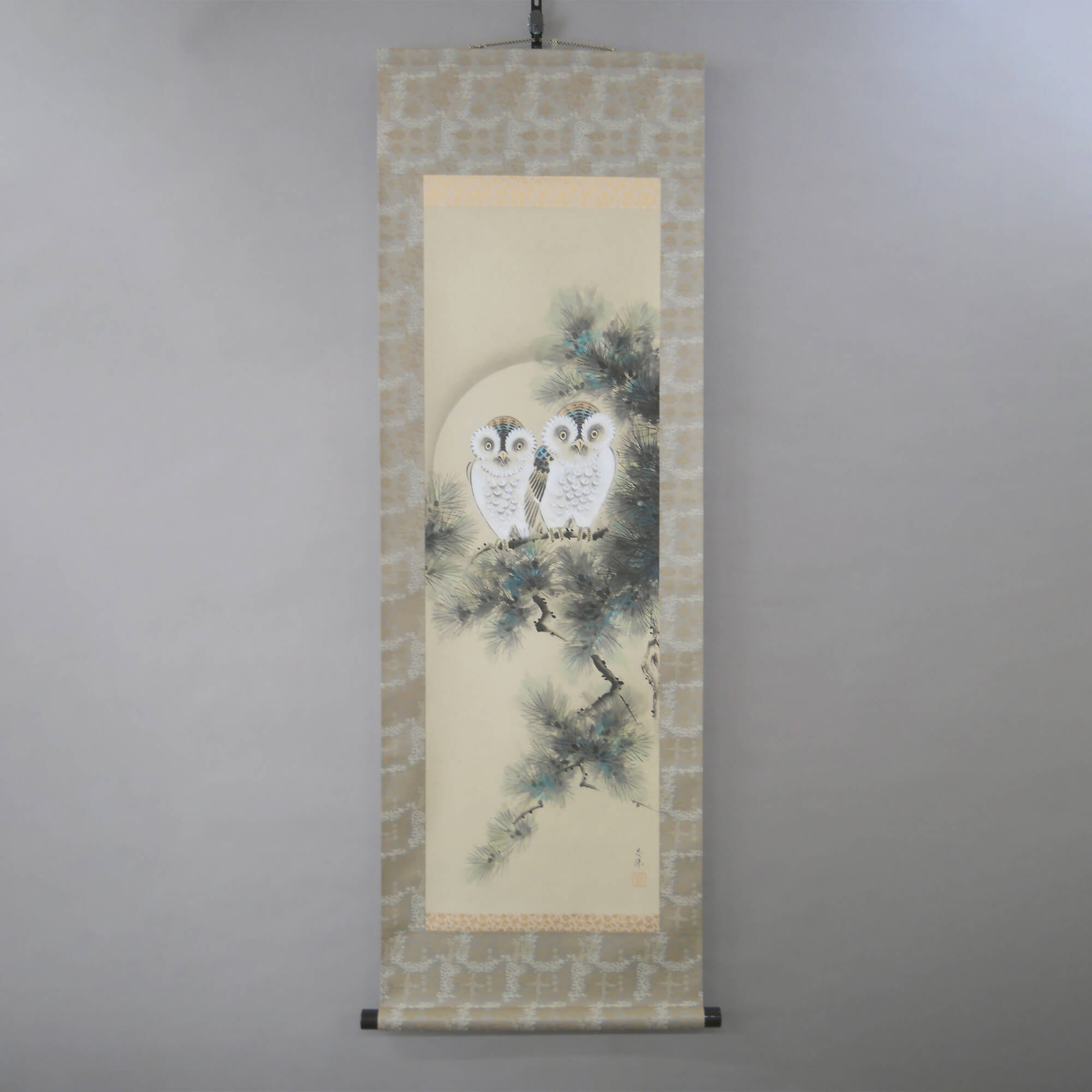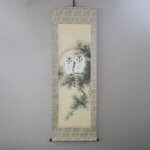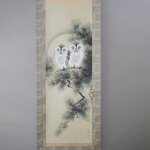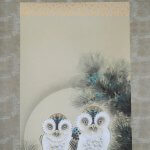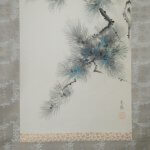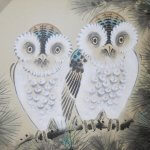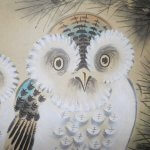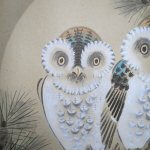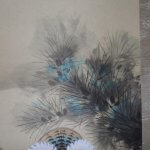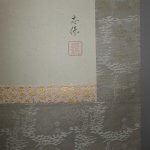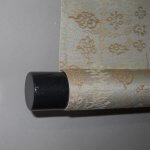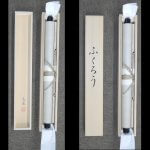Kakejiku Hanging Scroll: Owls / Nishio Shiho - Fukurō
- Product ID
- B0028
- Name
- Nishio Shiho
- Profile
A Japanese-style painter. In 1967, born in Gifu. Member of the Tōyō Bijutsukai.
- Size
- 505mm x 1380mm
- Roller End Material
Wood coated with black "urushi" (lacquer)- Material of the Work
- Japanese paper
- Price
- JPY 35,000
- Stock Condition
- In stock
- Payment: Click the Paypal Mark
- Duty and Taxes
Import duty and taxes are beyond our control and may apply to your shipment. Please noted that these fees are the responsibility of the buyer.
- Description
In Greek mythology, a little owl (Athene noctua) traditionally represents or accompanies Athena, the virgin goddess of wisdom, or Minerva, her syncretic incarnation in Roman mythology. Because of such association, the bird — often referred to as the “owl of Athena” or the “owl of Minerva” — has been used as a symbol of knowledge, wisdom, perspicacity, and erudition throughout the Western world. (See the link: https://en.wikipedia.org/wiki/Owl_of_Athena)
In Japan, owls had been highly prized as fortune birds for the following reasons:
01: Because owls can turn their head 180 degrees, they are believed to be wise, clever, good at business forecasting, and bring good commerce.
02: Owls are called ふくろう – fukurō in Japanese. There are some phonetic equivalents of the word ふくろう. For example, 「不苦労」 means without hardship. 「福老」 means happy elders. 「福籠」 means a basket of luck. They have the same sound. Owls are a symbol for longevity and believed to bring good luck.
The painting by Nishio Shiho depicts an owl couple cuddling on a pine tree. Shiho is a master at depicting birds and flowers. With the moon at their backs, owls are looking out from a thick pine tree as if they are welcoming a midnight visitor in the forest. This is a unique piece and makes us smile.

